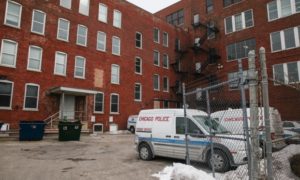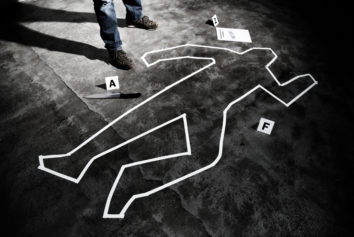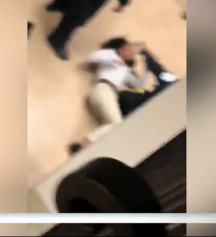If the nation needed any more confirmation that the country’s police departments too often see themselves as paramilitary forces who can operate outside the law with impunity, the secret CIA-style “black site” operated by the Chicago Police Department is all the proof necessary.
The shocking story of the site, known as Homan Square on the city’s west side, was broken yesterday by The Guardian, which reported that the police use it as a place to hide people from lawyers and family members, often so that the police can conduct illegal interrogations that sometimes feature beatings.
It’s no secret who bears the overwhelming brunt of this illicit activity: Black people.
The 2010 annual report by the Chicago police revealed that 72 percent of the 167,000 arrests in 2010 were of African-Americans (62 percent African-American male, 10 percent African-American female).
“The secretive warehouse is the latest example of Chicago police practices that echo the much-criticized detention abuses of the US war on terrorism,” the Guardian wrote yesterday. “While those abuses impacted people overseas, Homan Square – said to house military-style vehicles, interrogation cells and even a cage – trains its focus on Americans, most often poor, black and brown.”
In fact, one Black man, 44-year-old John Hubbard, actually died at the site—he was reportedly found unresponsive in a Homan Square “interview room” and later pronounced dead.
At a time when the devaluation of Black life by law enforcement has become a national rallying cry in the Black community, when we have seen too many cases of Black men and women treated by police as if their rights don’t matter, the revelation of the existence of Homan Square just confirms every suspicion the Black community has long had about police. Too many law enforcement personnel see Black people as defenseless, with no power or influence that the officers need be concerned about respecting.
As former longtime St. Louis County area police officer Glenn Rogers told Atlanta Blackstar, officers are much more careful when dealing with white suspects because they assume a mistake could endanger their career. With Black suspects, such thoughts don’t enter their heads.
The Chicago police even detained suspects as young as 15 at Homan Square. Lawyer Julia Bartmes told the Guardian a story about a mother who couldn’t find her 15-year-old son after he had been picked up by police before dawn—only to later discover that the boy had been held at Homan Square for 12 or 13 hours, where he was allegedly being questioned in connection with a shooting.
When Bartmes went to the west side building to see if she could retrieve him, she was refused entry for nearly an hour.
An officer told her, “Well, you can’t just stand here taking notes, this is a secure facility, there are undercover officers, and you’re making people very nervous,” Bartmes told the Guardian.
“It’s sort of an open secret among attorneys that regularly make police station visits, this place – if you can’t find a client in the system, odds are they’re there,” Bartmes said.
“They just disappear,” said Anthony Hill, a criminal defense attorney, “until they show up at a district for charging or are just released back out on the street.”
To Chicago civil-rights attorney Flint Taylor, Homan Square was a clear violation of the fifth and sixth amendments of the constitution.
“This Homan Square revelation seems to me to be an institutionalization of the practice that dates back more than 40 years,” Taylor said, “of violating a suspect or witness’ rights to a lawyer and not to be physically or otherwise coerced into giving a statement.”
It is clear that the police use the site to disappear people because no one taken there is actually booked, so there’s no record of them in the system. That means lawyers and family members have no way of finding them. Or in one case highlighted by the Guardian, the police actually changed a man’s name in the central bookings database in January 2013 so they could take him to Homan Square with a record of his transfer, said Eliza Solowiej of Chicago’s First Defense Legal Aid. After his time at Homan Square, the man had to be taken to the hospital because of a head injury he received in the interrogation room.
“I had been looking for him for six to eight hours, and every department member I talked to said they had never heard of him,” Solowiej said. “He sent me a phone pic of his head injuries because I had seen him in a police station right before he was transferred to Homan Square without any.”
Tracy Siska, a criminologist and civil-rights activist with the Chicago Justice Project, said that Homan Square represented the blurring of the lines between domestic law enforcement and overseas military operations.
“The real danger in allowing practices like Guantánamo or Abu Ghraib is the fact that they always creep into other aspects,” Siska said. “They creep into domestic law enforcement, either with weaponry like with the militarization of police, or interrogation practices. That’s how we ended up with a black site in Chicago.”



